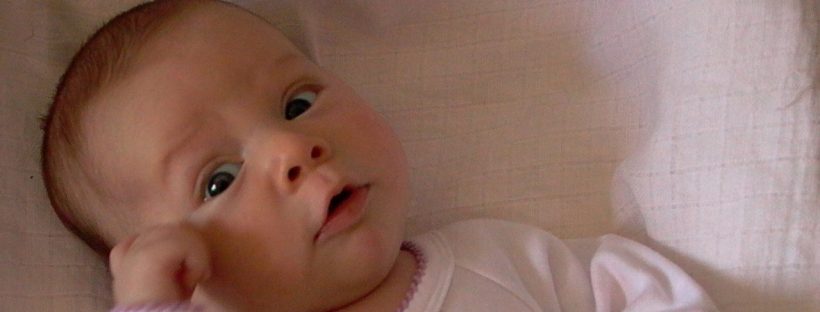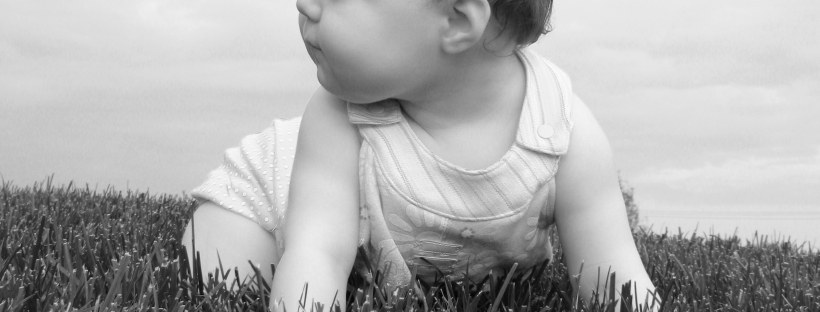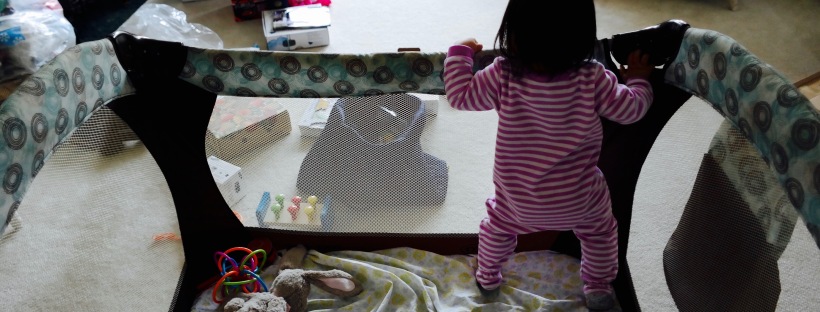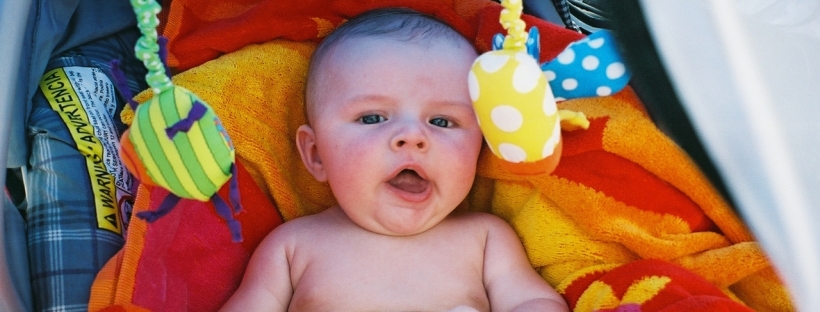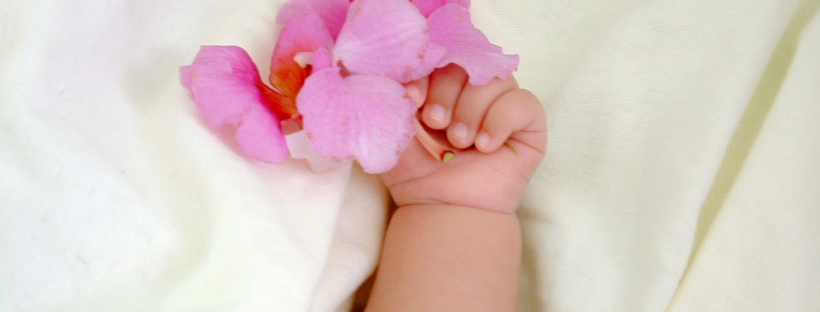Did you know young babies see better with their peripheral vision? That’s why you have noticed his eyes rolling to the corners or seems to be more interested in a toy to the side of him and disinterested when it is right in front of him.
Take advantage of this fact and hang your baby’s brightly colored mobile or toys more to the side of the crib, playpen, or bassinet. He may notice them more if they are in line with his peripheral vision.
0-2M
